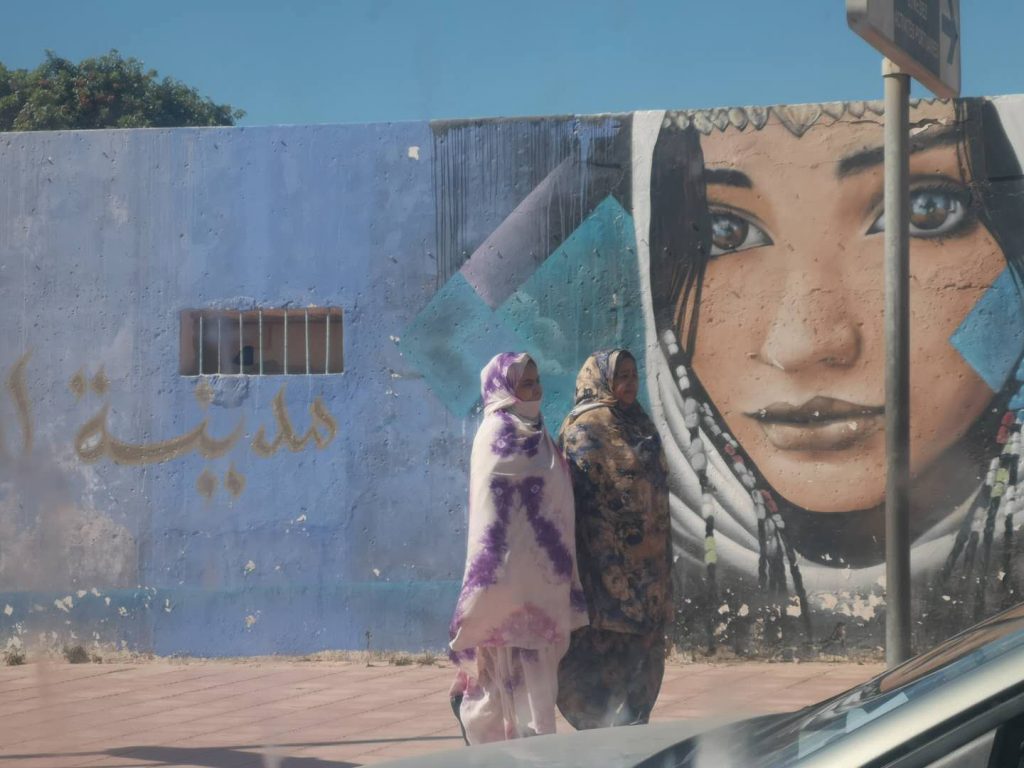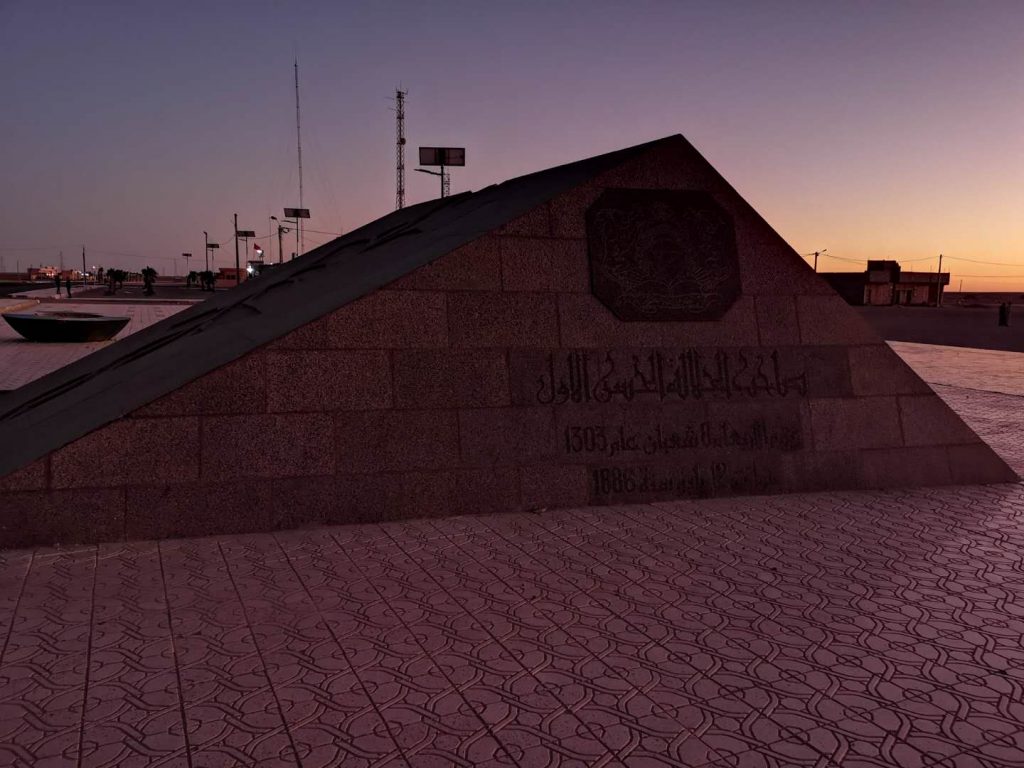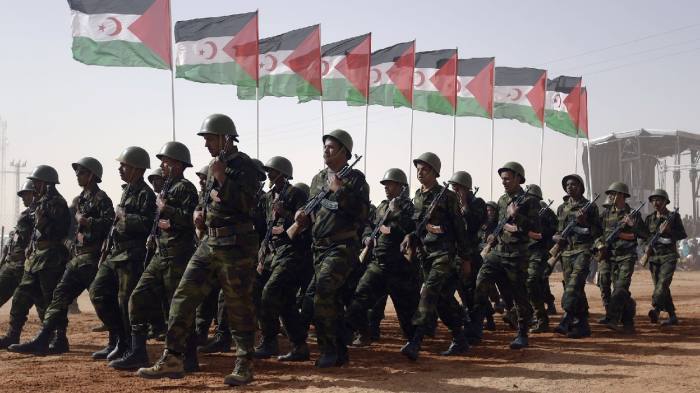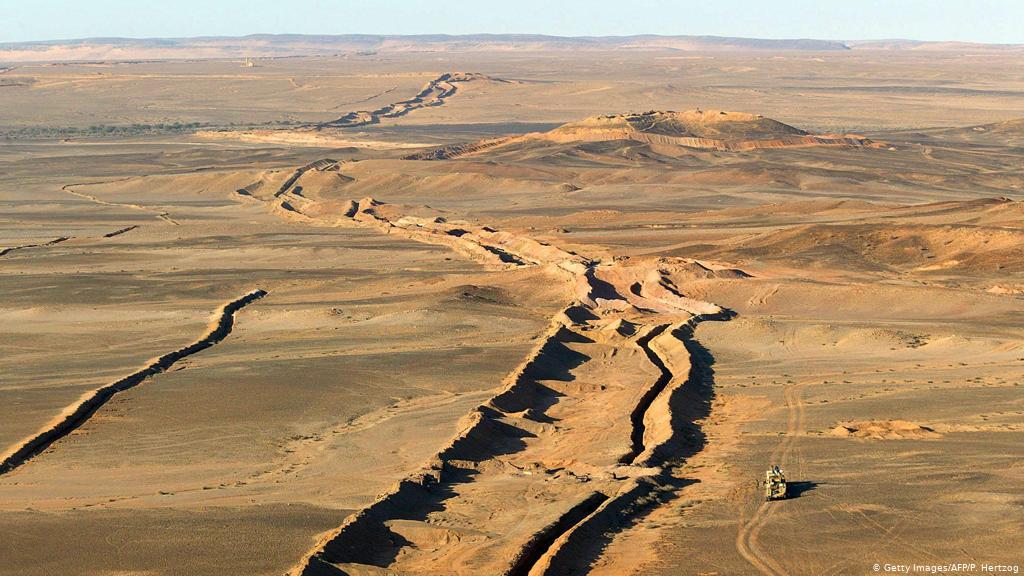If you’ve looked at a few different world maps, you might notice some weird discrepancies in north-west Africa. If you haven’t noticed that because you’re not a nerd, that’s fine, I’ll fill you in. They really, really struggle to decide on what’s going on in this little quasi-rectangle just under Morocco along the coast. Sometimes it’s part of Morocco which nearly doubles it in size, sometimes there’s like a dotted line, sometimes it’s just grayed out like it’s a nuclear exclusion zone that nobody inhabits. In reality, it’s one of the world’s largest disputed territories. This is the Western Sahara.
So, what’s in the Western Sahara?

For the most part, a whole lot of fuckin’ nothing. That’s not the region’s fault though, conflict for the last fifty years has made it hard to properly set up shop in. Of the 266,000 square kilometers of land, the population reportedly stands (according to Wikipedia) at 567,402. You might notice that’s barely over two people per square kilometer. Most of these people however currently live around the border regions inland, for reasons which will become clear as we continue.
The people living there are known as the Sahrawi people, who broadly live across this region of north-west Africa. As a result of ongoing conflict in the region, a great deal of this population are refugees, both internal and external in refugee camps along the Western Sahara border and in neighboring countries like Algeria.
The ‘capital’ city is Laayoune, close to the northern border with just under half of the whole country’s population present there. Despite being in the Western Sahara, it’s actually run by Morocco. In fact, the vast, vast majority of the region is run by Morocco and most of the people living there are Moroccans. It’s along the eastern border regions where you find the dissent. The other capital of Western Sahara, at least for now, is Tifariti, holding a mere 3,000 people. It’s one of the few parts of the Sahrawi controlled Western Sahara that’s actually a permanent settlement rather than a refugee camp, with the total population outside of Moroccan control being only about a tenth that of the Moroccan side. Though this is vastly inflated if you count the refugees living in adjacent countries.
Running between the Moroccan and Sahrawi controlled sides is what’s known as the Moroccan Western Sahara Wall, designed to act as a demarcation line between the two. The wall is monitored by the UN to make sure there’s no conflict between the two sides who, as you might have guessed from the whole refugee camp thing, have some unresolved differences. Those on the Sahrawi side refer to it as the ‘wall of shame’, which subtly implies that they don’t like it very much.
As for what else is there? Sweet, sweet Fred Astaire I have to say. It’s very much a desert and while there’s been some attempts to profit off of natural resources there, it’s reportedly an economic black hole for Morocco to administrate. Most of the communities there make their livelihood from fishing at the coast, which goes a long way to explaining why the barren eastern side is comparatively devoid of life.
History of the Western Sahara

Before we get too deep into what the independence movement is and why things are the way they are, we need to go back a bit and discuss some other things. What’s first important to know is the region’s historical use as a colony of Spain. Most notably, the Berlin Conference of 1884 divided up Africa into various spheres of influence and Spain gained control of the region. In the later treaty between France and Spain, a protectorate in Morocco was formed as two strips of land at the northern and southern tips of the country. In the south, this was Cape Juby, which was not in Morocco at all but was rather the extreme north of what was at the time the Spanish Sahara. Confusing? Understandable, but that’s just how indifferent the European colonizers were at the time. The main issue here is that this gave indication that the north of Western Sahara had been regarded as Moroccan territory.
In 1956, France ended its protectorate in the middle of Morocco which prompted Spain to do the same with theirs. Spain did however try to retain territory it controlled prior to the treaty, with the Spanish Sahara being part of this. Following a war of liberation in Morocco to free what territory remained under Spanish control, they then went on to demand the Western Sahara as well, along with some other territory. This came to a head on the 6th of November 1975 when the ‘Green March’ occurred. This was a mass peaceful march from Morocco into Western Sahara by around 350,000 Moroccans demanding sovereignty of the region. The Spanish, in a state of turmoil at this time, refused to fight back and swiftly began to negotiate the Madrid Accords with both Morocco and Mauritania, who also shared a border with the region.
Under pressure from Morocco, the people of the Western Sahara and their political representatives had no representation in the talks, despite Spanish demands that the wishes of these people be respected. The northern two-thirds of the Western Sahara were formally annexed by Morocco while the southern third was annexed by Mauritania. In response, Algeria broke off relations with Morocco and began militarily endorsing Western Saharan independence fighters… Who we’ll be discussing shortly, I assure you.
Clashes began as soon as the countries moved to seize territory, with Algerians briefly intervening militarily before withdrawing after a political agreement. They continued to support the independence fighters who were increasingly isolated in what grew from localized battles into a war. Mauritania ultimately retreated from their claimed territory in 1979, which Morocco attempted to then claim but which became a kind of breathing-space for the liberation fighters. Due to the complicated situation, the UN recognizes the territory as non-sovereign awaiting decolonization and while it recognizes Morocco de-facto administering the region, it does not recognize sovereignty over it.
The Polisario Front

Now… Who the hell are these independence fighters anyway? They’re called the Polisario Front, otherwise known as the Popular Front for the Liberation of Saguia el-Hamra and Río de Oro. These two regions being the portions of Western Sahara that had been ceded to Morocco and Mauritania. The Polisario Front was formally established on the 10th of May 1973 with its first leader being El-Ouali Mustapha Sayed. The front was not intended to be a party and was rather a broad nationalist movement intended to encompass many sections of Western Saharan society, though the rhetoric and official ideology was, at least initially, socialist in content.
Ten days later, they launched their first attack and seized a Spanish auxiliary post and stole a number of weapons. From then, they began to take control of the surrounding desert and launching guerrilla attacks on the Spanish. Defecting Sahrawi auxiliary troops swelled their ranks and influence greatly in these early days. By 1975, Algeria had agreed to set up a headquarters for the Polisario Front on their territory, so that they could operate openly.
On December 11th, 1975, the first armed conflict erupted between the Moroccan troops attempting to annex Western Sahara and the Polisario Front. Mauritanian troops attacked the Polisario Front from the rear and added to the pressure, with only limited Algerian assistance helping to ease the struggle. By January of the following year, Morocco had begun bombing Sahrawi refugee camps with napalm and phosphorous, reportedly killing thousands. On the 26th of February 1976, Spain formally withdrew from the region which prompted the Polisario Front to declare the foundation of the Sahrawi Arab Democratic Republic on the 27th of February 1976.
What rapidly became the Western Sahara War saw the Polisario Front balloon in power and numbers as the flood of refugees joined their camps while Algeria and Libya provided material support. It was this outsized strength that rapidly resulted in Mauritania abandoning their claims to the territory and recognizing Sahrawi sovereignty of the entire region, while the much more powerful Morocco remained the primary foe. During the war with Morocco, the Polisario Front’s leader Sayed was killed during a raid on Morocco’s capital, being replaced by Mohamed Abdelaziz.
The conflict dragged into the 80s with neither side able to dislodge one-another, though the creation of the aforementioned Moroccan Wall had aided in lowering the intensity of the conflict quite severely. While military gains were not being made by the Polisario Front, Morocco was seeing major financial harm caused by the cost of stationing so many troops in a patch of mostly empty desert. On the 7th of October 1989, a major Polisario Front attack was repelled which at last encouraged them to seek a ceasefire agreement with Morocco. A subsequent failed Moroccan attack convinced them to do the same, with a cease-fire finally coming into effect on the 6th of September 1991 with promises of an independence referendum the following year. This… Never happened. Both sides argued over who had the right to participate in such a referendum, only seeming to agree to a vote that massively favored one side over the other. All the same, the ceasefire held… For around thirty years.
How is the Western Sahara Now?

In recent years, the limbo has largely continued as normal, albeit with Moroccan settlers starting to flood the region and the bulk of Sahrawi citizens remaining in refugee camps in Algeria. The Polisario Front dropped its socialist rhetoric at the start of the 90s, as was the case for most African ‘socialist’ movements of the time. At present, 40 UN states maintain diplomatic relations with the Sahrawi Arab Democratic Republic, with seven recognizing it as a state and with eighteen having Sahrawi embassies.
Despite the seemingly successful peace fire that has held since the 90s, things finally broke down in the last quarter of 2020. Morocco was attempting to develop a road into Mauritania through West Saharan territory, re-establishing direct trade links with that part of Africa. Peaceful protesters camped on the road which was responded to on the 13th of November by a military operation to clear them, with the attacks and gunfire officially breaking the ceasefire. Clashes continued until at last, the Saharawi Arab Democratic Republic declared war on Morocco on the 14th. Attacks were launched on Moroccan positions that same day. At present, the situation doesn’t appear significantly violent, certainly not to the level it used to be at, but a sudden escalation could lead to these skirmishes becoming full on offensives.
What else is notable about Western Sahara? Well… It has a film festival. The Sahara International Film Festival is unfortunately not technically held in the country itself, but rather in an Algerian refugee camp right on the border. This is most likely due to the difficulty of actually getting to the festival if it were there. The winning film at the festival is awarded with the White Camel! Which is… A literal white female camel, donated to the refugee family that hosts the actors or director of that film. They also get a trophy of the camel as well as a desert rose.
That’s about all there is to say! If you’re interested in the Western Sahara from all of this, well we… Don’t currently run tours there, sadly. That’s not to say we won’t ever though! Stay tuned, you never know.





